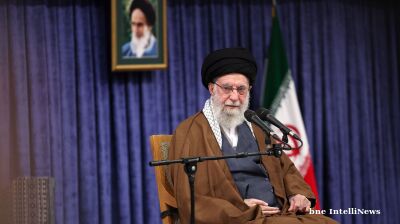Fears of a possible run on the Iranian rial (IRR) have in recent days seen the currency depreciate to an unofficial rate of more than IRR40,000 against the dollar, several Tehran bureaux de change said on October 11. The turbulence behind the anxiety has been generated by the run-up to Donald Trump's imminent announcement on what his approach will be to the nuclear deal.
Government officials have even had to lately forcibly reject claims from some economic experts that the rial has been trading at over 50,000 to the dollar among street traders on the black market.
The free market rate for the US dollar has increased more than 6% from August’s high of IRR38,130/USD, according to Tehran Gold And Jewellers Union. Other currencies have followed suit, with significant purchase increases.
Meanwhile, At 21:00 UTC on October 11 the government’s official rate for the currency stood at IRR34,141/USD, according to xe.com. On October 4, it finished at IRR33,954/USD and a week earlier, on September 27, it ended at IRR33,772/USD.
Like the dollar, the euro and pound sterling have also over recent days reached best-this-year rates against the Iranian currency.
Iranian government spokesperson Mohammad Baqer Nobkaht responded to accusations that the government has been working to lower the value of the rial by stealth.
“The administration does not benefit from the devaluation of our currency since it adds further inflationary pressures to commodities in the country, which is against our wider macroeconomic plan,” he added.
He added that even with the current threats emanating from the US, the rial should not fall against other currencies. The government, he reminded, "managed to lower the exchange rates" when sanctions were placed on the country in 2012.
Nobakht added that although the government did pursue policies to lower the exchange rate, it stopped short of pumping hard currency into the market.
Earlier this week, the Financial Tribune reported that Razi Hajj-Aqamiri, chairman of the Tehran Chamber of Commerce, Industries and Mines had said that he believed the government was in the process of closing the gap between the official exchange rate and the free market rate.
“It seems that the government has decided that in order to improve the current situation of the economy, it is necessary that the USD reaches its real value in the market,” he said.
He did not go so far as to say that the Rouhani administration was using the nuclear deal standoff as a mechanism to close the gap. Nevertheless, he did state that there is no roof to the value the dollar can reach.
News
_Cropped_(1).jpg)
Colombia pulls ambassador from Washington as Trump threatens tariffs
Colombia has recalled its ambassador from Washington after President Donald Trump branded President Gustavo Petro an "illegal drug leader" and pledged to halt all financial assistance whilst threatening enhanced tariffs.

Top US military officer for Latin America quits amid Venezuela tensions
The head of the Pentagon's Southern Command is to step down at the end of the year amid mounting tensions over the Trump administration's military operations in the Caribbean targeting alleged Venezuelan drug traffickers

Iran's Khamenei calls Trump a 'real terrorist'
Iran's Supreme Leader Khamenei tells Trump "what business is it of yours" regarding nuclear industry, calling US president's positions lies and bullying whilst rejecting claims of supporting Iranian people.
-fotor-bg-remover-20251020114620.png)
Bolivia elects centrist Rodrigo Paz to lead a nation in chaos
Bolivia has entered a new political era after Rodrigo Paz secured the presidency with 54.5% of the vote, defeating former conservative leader Jorge “Tuto” Quiroga.
_seen_here_meeting_with_Congressman_Jimmy_Panetta_201025_Cropped_1760946356.jpg)


